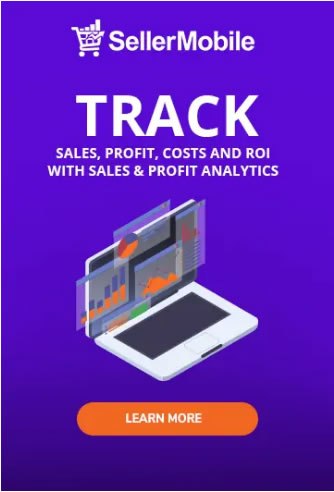Worried about inflation and a looming recession? We’ll show how e-commerce inflation affects consumers, and what you can do about it.
The e-commerce space has always been dynamic, but is especially difficult to navigate now in the wake of recent global events. The outbreak of COVID-19 and a war in Eastern Europe have created breakdowns in supply chains along with increased inflation.
Sellers who aren’t careful run the risk of falling victim to unforeseen inventory troubles and fiercer competition. Here, we’ll outline the causes of e-commerce inflation, its effects on consumer habits and what you can do to safeguard your business.
The Roots of E-commerce Inflation
E-commerce inflation is a unique form of inflation that results from rapid changes to both supply and demand in online retail. Ultimately, e-commerce sellers struggle to meet this demand and keep up with rising production costs.
In general, inflation rose dramatically after the onset of the global pandemic. The inflation continued for the next two years, and experts suspect it won’t wane in earnest until the end of 2023.
E-commerce inflation in particular became an issue due to social distancing protocols. The need for social distancing led more and more consumers to turn to online shopping, increasing demand. Social distancing also kept factories and warehouses from operating normally, decreasing supply. Both factors put heightened pressure on sellers, drastically affecting their ability to turn a profit.
How E-commerce Inflation Affects Consumers
E-commerce inflation has led to three unique consumer behaviors that spell trouble for sellers. The first is that consumers have cut back on nonessential purchases. Increased prices and economic uncertainty mean consumers put first things first and prioritize groceries and utilities over other goods.
Consumers are now also buying large quantities of products at once. Supply chain issues have caused several sellers to lose sales due to out-of-stock. Consumers are worried about their ability to make purchases in the future, and so are buying as much product as they can, when they can.
Lastly–and perhaps ironically–consumers are reverting to buying from brick-and-mortar retailers. As the original explosion in demand for online sellers created price hikes, consumers began returning to businesses that no longer had to maintain social distancing. Many of these businesses also offered considerable discounts in an effort to raise their post-COVID visibility.
E-commerce sellers therefore face increased competition on top of persistent inventory issues. Luckily, there are ways sellers can give themselves an edge when charting a way forward.
Solutions for Sellers
Overcoming e-commerce inflation requires a multi-pronged approach. The list below isn’t exhaustive, but prioritizing these elements will help insulate your business from an economic downturn.
- Win the Buy Box
The Buy Box has always been important for success as an online retailer, but is critical when confronting e-commerce inflation. You’ll want to comb through your catalog and optimize your product listings. Pay attention to spelling and grammar, as well as if your listings look as good or better than those of your competitors.
The quality of your product images and videos are particularly important. Images and videos make a strong first impression, and often make or break a sale. You’ll want to redo your keyword research to ensure your listings appear at the top of the rankings.
- Stay Stocked
Effective inventory management is crucial given the current strain put on the supply chain. To avoid lost sales due to out-of-stock, consider placing bulk orders with your suppliers. A healthy stock makes you stand out among the competition.
Competitors will err on the side of frugality, only keeping the inventory that is absolutely necessary. Don’t fall into this trap, as staying properly stocked will help you stay one step ahead of inflation.
You might want to set up out-of-stock alerts for your competitors’ products. When they run out of inventory, you can raise your prices.
- Watch Your Numbers
The uncertainty created by both inflation and a looming recession means monitoring sales data is crucial. Stay on top of even minor fluctuations in profit and loss, units sold and orders placed. This will help you adapt to changing conditions and eliminate problems before they arise. Note any room for improvement where you can gain an extra bit of edge in the marketplace.
- Raise Your Prices
Generally speaking, raising prices negatively affects demand. However, e-commerce inflation means too much demand is part of the problem. Raising your prices can help offset increased production costs. You might also consider investing in seller software that notifies you of changes to your competitors’ prices, so you can fall in line.
- Build Your Brand
Last but not least, building your brand will ensure your business outlives inflation. The key components of brand-building are identity and community. Make sure your listings, even for completely different products, maintain a consistent tone. All your listings should be clearly identifiable as coming from your business.
The efforts you make to foster community will go a long way as well. Consider developing product inserts and similar marketing materials to coax customers into joining an email list. Unique inserts establish a brand identity, and an email list creates a sense of community. Make sure you spend time refining your buyer persona as well.
Summary
In order to successfully navigate e-commerce inflation and a looming recession, sellers must consistently monitor their competition and avoid stockouts. Unfortunately, increased pressures on both supply and demand have reduced the margin of error for success in the e-commerce space.
Combating these issues takes vigilance, which is why many sellers use seller software. Seller softwares like SellerMobile provide automated inventory management tools and track competitors’ listings. You can generate inventory forecasts based on historical sales data, and receive alerts when actual sales don’t line up with expected sales. You can also monitor competitors’ listings, using repricer suggestions to win the Buy Box. If you’re worried about e-commerce inflation and want to try out these tools for free, simply click here to begin a 14-day trial period.





